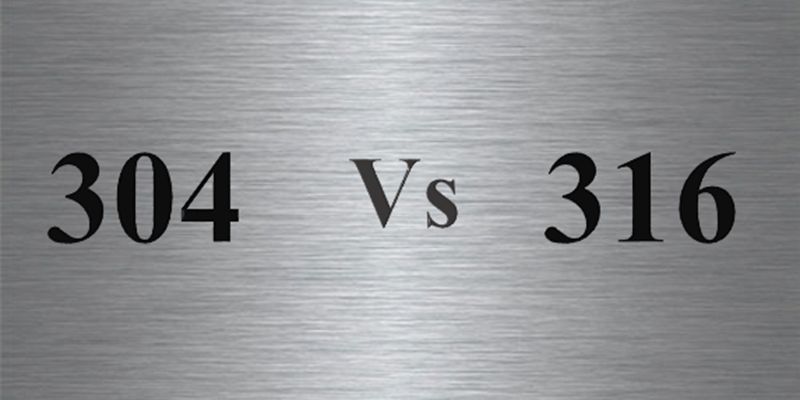When it comes to creating eye-catching signage, logos, or decorative elements, the choice of materials can significantly impact the overall aesthetic and durability of the final product. Alloy 304 and Alloy 316 are two popular stainless-steel grades often used for creating cut letters in various applications. We will delve into the characteristics of Alloy 304 and Alloy 316 cut letters, highlighting their differences and helping you make an informed decision based on your specific needs.
Alloy 304, also known as "18-8" stainless steel, is one of the most widely used and versatile stainless-steel grades. It is renowned for its excellent corrosion resistance, formability, and cost-effectiveness. Alloy 304 cut letters are often chosen for indoor and mild outdoor applications due to their resistance to atmospheric corrosion and various chemicals. Here are some key features of Alloy 304 cut letters:
Corrosion Resistance: Alloy 304 offers good corrosion resistance in a range of environments, making it suitable for most indoor applications. However, it may not be as suitable for highly corrosive environments, such as those with exposure to saltwater or aggressive chemicals.
Aesthetic Appeal: Alloy 304 has a bright, reflective surface that can be polished to a high shine. It lends a clean and modern appearance to cut letters, making them visually appealing.
Cost-Effectiveness: Compared to Alloy 316, Alloy 304 is generally more cost-effective, making it a popular choice for projects with budget constraints.
Alloy 316 is an austenitic stainless steel that offers superior corrosion resistance compared to Alloy 304. It contains molybdenum, which enhances its resistance to pitting and crevice corrosion, making it an excellent choice for outdoor and marine applications. Here are some key features of Alloy 316 cut letters:
Enhanced Corrosion Resistance: Alloy 316 is known for its exceptional resistance to corrosion, especially in aggressive environments, including saltwater and chemical-rich surroundings. This makes it suitable for outdoor signage and installations near coastal areas.
Durability: Due to its higher molybdenum content, Alloy 316 cut letters exhibit better resistance to corrosion-induced damage, ensuring a longer lifespan, even in harsh conditions.
Aesthetic Versatility: Alloy 316 can also be polished to a reflective finish similar to Alloy 304, making it equally appealing in terms of aesthetics.
Choosing the Right Alloy for Your Project:
The choice between Alloy 304 and Alloy 316 cut letters largely depends on the intended application and the environmental conditions the signage or decoration will be exposed to. Here's a quick guide to help you decide:
Choose Alloy 304 Cut Letters if:
Your project is indoors or in mildly corrosive environments.
Budget is a primary consideration.
A bright and polished appearance is desirable.
Choose Alloy 316 Cut Letters if:
Your project is outdoors, near saltwater, or in aggressive chemical environments.
Longevity and maximum corrosion resistance are crucial.
You are willing to invest in a higher-grade material for enhanced durability.
Both Alloy 304 and Alloy 316 are excellent choices for creating cut letters, each with its own set of advantages. By understanding the differences in their corrosion resistance, durability, and cost, you can make an informed decision that aligns with your project's requirements. Whether you opt for the cost-effective versatility of Alloy 304 or the enhanced corrosion resistance of Alloy 316, your cut letters are sure to make a lasting impression.



